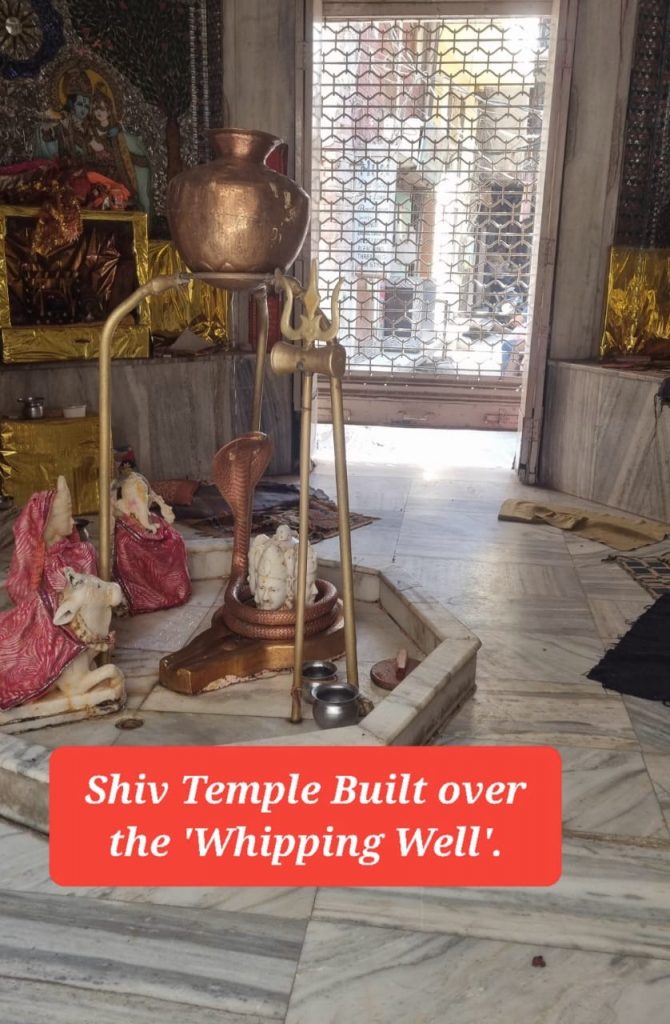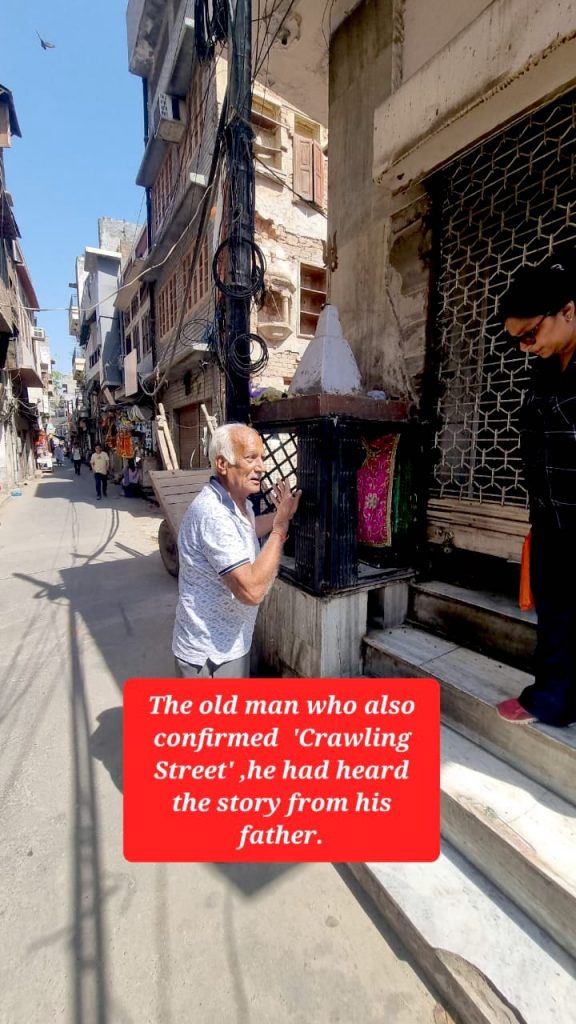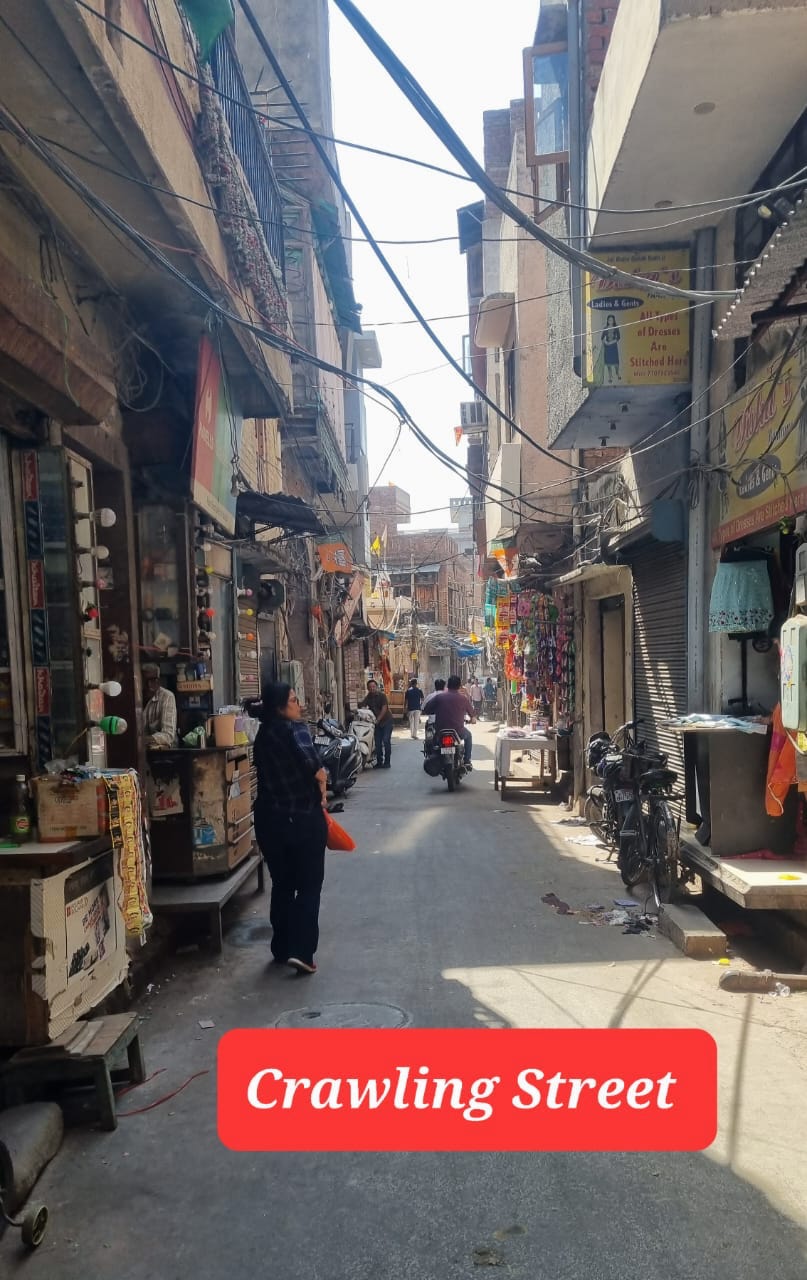Whereas substantial global awareness and outrage has been created about Jallianwala Bagh, comparatively precious little has been done as far as creating awareness about Crawling Street of Amritsar.
Walking through the densely populated walled city of Amritsar, the Holy City of Sikhism, the visitor is struck by the narrow, crowded and congested lanes that cross each other. Within these confines lies one such narrow lane, now sunk into oblivion as also anonymity, which bears testimony to incidents that symbolize some of the worst instances of brutality perpetrated during the colonial era.
This 180-metre stretch of narrow road is ‘Crawling Street’, barely wide enough for a single vehicle to pass at any point of time. The scenario is familiar throughout the vicinity, houses standing wall to wall, both sides lined with shops interspersed with large, thick wooden doors porting heavy brass knobs, These are entrances to havelis or kotis, typical dwellings of the early 20th century Punjab, untouched by the passage of time. Yet a majority of those who dwell behind these doors as also the residents of the rest of the city are blissfully unaware as to why this street got this unusual name.

It was on this street on the 10th of April, 1919, that Marcella Sherwood, a missionary of the Church of England, living in Amritsar for over fifteen years, was knocked down from her bicycle by an infuriated mob and assaulted with sticks. In her attempt to flee she reached a house but the door was slammed shut in her face. She was left abandoned on the street in a critical condition.
The crowd dispersed. Miss Sherwood was rescued by Lalu Halvai a local resident, who then arranged for her to be hidden in the Haveli of Badri Nath, up the street. Prompt medical attention arranged by her Indian saviours saved her life, a gesture conveniently forgotten by the representatives of the Colonial Rule.
In retaliation and as an example of stern retribution, on April 19th, Brigadier General Reginald Dyer promulgated the so-called ‘Crawling Order’, which remained in effect until its revocation a week later. Any Indian traversing the street, the residents not exempted, had to crawl, in Dyer’s language, ‘on all fours’. Any breach of the order meant that the offender was that tied to tiktikis (flogging posts) and flogged.
The well next which marked the starting point at one end of the street, where the flogging posts were put up came to be called the Korian Khoo. Khoo in Punjabi means well and Korian means flogging. Today the well does not exist. In its place stands a Shivala or Shiva Temple, a site being a mute witness to the brutalities committed by the colonial regime.
In April 1919 the whole of the undivided Punjab was up in flames. The spark which ignited this was the passing of the draconian Anarchical and Revolutionary Crimes Act, 1919, popularly known as the Rowlatt Act, enacted on the recommendations of the Committee headed by Sir Sidney Rowlatt.
The Act indefinitely extended the emergency measures like preventive indefinite detention, imprisonment without trial and judicial review enacted in the Defence of India Act 1915 during the First World War. The cardinal reason for the passage of the Act was a perceived threat from revolutionary nationalists which would be reactivated on account of the lapse of the Defence of India Act.
In effect the Imperial Government was now authorised to imprison any person suspected of revolutionary activities in British India for up to two years. The bitter reality was that the Act empowered the colonial authorities power to deal with anti national [in effect anti colonial] activities with an iron hand.

Naturally, the Act sparked off a chain of protests
Later in the morning a protesting crowd proceeded towards the residence of the Deputy Commissioner of Amritsar, demanding the release of the two popular leaders. The protesters were fired upon by a military picket. Later in the day, several banks and other buildings, either housing government offices or British firms, considered symbols of the Empire were set ablaze. Amidst the ensuing arson four European men were brutally murdered. Around twenty Indians lost their lives in the resultant firing by the army. It was against this backdrop that Miss Sherwood was attacked. Martial Law was declared and the army called in to control the situation. General Dyer was entrusted with the responsibility of maintain law and order in Amritsar. The flames were not quelled and this eventually culminated in the “Jallianwala Bagh massacre” on April 13th 1919. The troops under the command of General Dyer opened fire on a peaceful meeting being held in protest against the arrest of the two leaders. The resultant genocide is now history. In fact it has been characterized as the turning point in the history of British India, from where began the beginning of the end of colonial rule. Whereas substantial global awareness and outrage has been created about Jallianwala Bagh, comparatively precious little has been done as far as creating awareness about Crawling Street in concerned. It is said that at least 50 people were made to crawl on their bellies and according to Amritsar’s popular writer Naresh Johar, these included a blind man, a few handicapped people and a pregnant woman.
Strangely General Dyer in his deposition before the Hunter Commission which was appointed to investigate the incident, stated that he “also wanted to keep the street sacred,” his primary motivation being to punish “the wicked”. The idea, apart from revenge, obviously was to send home a strong message regarding the consequences of any violence against the European community.
With the passage of time most of the residents who lived there on Crawling Street a hundred years ago have moved out to be replaced by later migrants, for whom the history of the Street is inconsequential. A few metres from the Shivala is the Kesar Da Dhaba, a food joint perpetually crowded and popular among locals and tourists alike. Surprisingly there is nothing to provide the visitors with an insight into the colonial local history that lies buried under the surface
The Hunter Commission Report indicted General Dyer arguing that in continuing firing as long as he did, he “committed a grave error.” Dissenting members argued that the martial law regime’s use of force was wholly unjustified. Strangely, in what appears to be a bid by the colonial government to downplay the misdeed of its officials, the only action taken was that the Commander-in-Chief of India. General Charles Monro summoned General Dyer and asked him to resign his post. Winston Churchill, the then Secretary of State for War, wanted Dyer to be disciplined, but the Army Council superseded by him by ruling that Dyer should be allowed to resign with no plan for further punishment. Surprising as this was, even more shocking was the reaction of the English press. The Morning Post’s claim that Dyer was “the man who saved India” is a case in point.
Congress leader Navjot Singh Sidhu, on his part, has demanded the renaming the infamous ‘Crawling Street’ as “Freedom Street or “Shaheedan Di Gali”. Some local residents, aware albeit sketchily of the locality’s history have also demanded that a memorial be erected to keep alive the black chapter of Amritsar’s colonial past, which no doubt needs to be highlighted for the generations to come.

